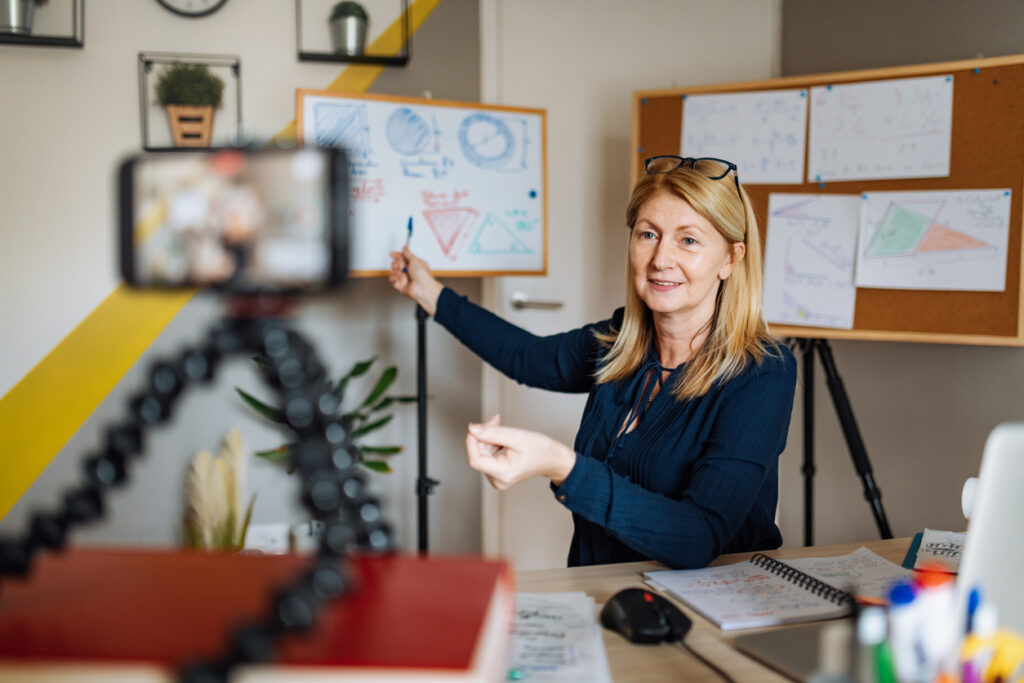After a few glasses of champagne at our Christmas do’ in 2019, one of my trainers enthusiastically proclaimed, “2020 is going to be an epic and memorable year!” How could he, or any of us, have predicted the way all of our lives would change almost overnight in the surreal, science fiction-like days of March that year?
Like many businesses, mine suffered. All our bookings were cancelled (not postponed) in a matter of days. The vast majority of our work is face-to-face highly experiential learning sessions that raise awareness of seven skills that, actually, we now need more than ever: adaptability, critical thinking, empathy, integrity, being proactive, optimism and resilience.
We worked with law firms, universities and health practitioners, and 2020 was meant to be a high-growth year expanding on successful and hard-won contracts. A brand new website had already been commissioned.
When dealing with fast, unexpected change the key skill everyone needs right is the ability to move and adapt
– Joe Nellis, Global Economics professor at Cranfield School of Management
Most training providers were familiar with blended learning and providing a mix of in-person and online solutions. For us, going from half and full-day interactive face-to-face training to condensed 90-minute online masterclasses was a huge change. How do you replicate workshops including drama, improvisation and experiential exercises designed to boost self-awareness and soft skills? The answer is: you don’t. Instead, you create a different kind of learning experience that suits the context and the circumstances but also provides valuable learning and insights in a format that can continue long after the pandemic is behind us.
Many of us did indeed, in those early days, attempt to replicate what we did face-to-face to an online setting while waiting for things to ‘get back to normal’. What has happened since then, however, is a huge shift in training and how it is delivered – it’s one that was already coming, only now it has been propelled by the pandemic. Running full-day training sessions was already becoming less popular with the logistics and costs involved in bringing people together with a trainer in (usually) fairly small groups. Add to that the no-shows and last minute cancellations due to the reluctance of many to take that much time out of work and sit in a training room, and the way many people actually dreaded attending training, and you have a catalyst for something new to happen.
Many firms do not envisage returning to face-to-face training any time soon and once they do, they will shift from most of their training being face-to-face, to most of it being online or delivered in a blended setting. The order of the day is agile learning methodologies that promote collaboration, speed and flexibility. We’ve been quick to learn what works and what doesn’t in the pandemic.
Six tips for better virtual learning
So how can we move forward with the virtual learning that had to be created in crisis mode and make it fit for the future?
- Short, sharp and packed full: it’s better to have a 90-minute live online session packed with ideas, tips, research and content that is exactly fitted to what people need. We create sessions that have common themes and formats but are updated each time they are run.
- Dynamic delivery: the facilitator has to tap into connecting with the group remotely. That means basic stuff like using peoples’ names but also being absolutely on top of rocking great break out rooms, moving from one theme to another and encouraging interaction through the chat function, whiteboard, skilful feedback after discussion points and responding to anything that delegates offer.
- Pre and post touchpoints: wherever possible, I make contact with participants ahead of the session asking them questions and input connected to the theme. Even though not everyone will respond, many do and I can then incorporate this into the session. Post session I send out useful resources that correspond to themes we’ve covered but also link directly to issues people have raised.
- Self-access learning made better: modules or input delivered without a facilitator cannot just be a mix of video and forms to complete online. We all need to become instructional online designers – what makes a really good quiz? What types of interactive activities does the online learning management system allow (many have limitations)? Learning this way needs to be instinctive (trial, test and trial again), engaging and easy to navigate with top-notch content.
- Focus on performance: any learning should be a transformative experience for the learner – whether 30 minutes, two hours or half a day. The shorter it is, however, the more impactful it needs to be. Online learning needs to include the same kind of learning that we absorb naturally in the workplace: problem-solving, experimentation, working with others, asking questions and ideas and conclusions that can be applied immediately in a workplace setting.
- Face-to-face will still have a place: but is likely to be focused on very specific and highly tailored facilitated sessions for leadership teams (it’ll also be much shorter), or one-to-one coaching and highly likely to be part of a blended learning approach overall rather than stand-alone sessions.
Most of the time, the future arrives gently. Despite the high speed of change we were already so used to before the pandemic, we actually absorb the effects of change into our daily lives quite slowly – especially at work. Hence why, for years, there has been this gradual move towards virtual learning. These past 16 months have now fast-tracked this into the mainstream.
Interested in this topic? Read How effective is your learning culture in the hybrid world of work?
After a few glasses of champagne at our Christmas do’ in 2019, one of my trainers enthusiastically proclaimed, “2020 is going to be an epic and memorable year!” How could he, or any of us, have predicted the way all of our lives would change almost overnight in the surreal, science fiction-like days of March that year?
Like many businesses, mine suffered. All our bookings were cancelled (not postponed) in a matter of days. The vast majority of our work is face-to-face highly experiential learning sessions that raise awareness of seven skills that, actually, we now need more than ever: adaptability, critical thinking, empathy, integrity, being proactive, optimism and resilience.
We worked with law firms, universities and health practitioners, and 2020 was meant to be a high-growth year expanding on successful and hard-won contracts. A brand new website had already been commissioned.
When dealing with fast, unexpected change the key skill everyone needs right is the ability to move and adapt
– Joe Nellis, Global Economics professor at Cranfield School of Management
Most training providers were familiar with blended learning and providing a mix of in-person and online solutions. For us, going from half and full-day interactive face-to-face training to condensed 90-minute online masterclasses was a huge change. How do you replicate workshops including drama, improvisation and experiential exercises designed to boost self-awareness and soft skills? The answer is: you don’t. Instead, you create a different kind of learning experience that suits the context and the circumstances but also provides valuable learning and insights in a format that can continue long after the pandemic is behind us.
Many of us did indeed, in those early days, attempt to replicate what we did face-to-face to an online setting while waiting for things to ‘get back to normal’. What has happened since then, however, is a huge shift in training and how it is delivered – it’s one that was already coming, only now it has been propelled by the pandemic. Running full-day training sessions was already becoming less popular with the logistics and costs involved in bringing people together with a trainer in (usually) fairly small groups. Add to that the no-shows and last minute cancellations due to the reluctance of many to take that much time out of work and sit in a training room, and the way many people actually dreaded attending training, and you have a catalyst for something new to happen.
Many firms do not envisage returning to face-to-face training any time soon and once they do, they will shift from most of their training being face-to-face, to most of it being online or delivered in a blended setting. The order of the day is agile learning methodologies that promote collaboration, speed and flexibility. We’ve been quick to learn what works and what doesn’t in the pandemic.
Six tips for better virtual learning
So how can we move forward with the virtual learning that had to be created in crisis mode and make it fit for the future?
- Short, sharp and packed full: it’s better to have a 90-minute live online session packed with ideas, tips, research and content that is exactly fitted to what people need. We create sessions that have common themes and formats but are updated each time they are run.
- Dynamic delivery: the facilitator has to tap into connecting with the group remotely. That means basic stuff like using peoples’ names but also being absolutely on top of rocking great break out rooms, moving from one theme to another and encouraging interaction through the chat function, whiteboard, skilful feedback after discussion points and responding to anything that delegates offer.
- Pre and post touchpoints: wherever possible, I make contact with participants ahead of the session asking them questions and input connected to the theme. Even though not everyone will respond, many do and I can then incorporate this into the session. Post session I send out useful resources that correspond to themes we’ve covered but also link directly to issues people have raised.
- Self-access learning made better: modules or input delivered without a facilitator cannot just be a mix of video and forms to complete online. We all need to become instructional online designers – what makes a really good quiz? What types of interactive activities does the online learning management system allow (many have limitations)? Learning this way needs to be instinctive (trial, test and trial again), engaging and easy to navigate with top-notch content.
- Focus on performance: any learning should be a transformative experience for the learner – whether 30 minutes, two hours or half a day. The shorter it is, however, the more impactful it needs to be. Online learning needs to include the same kind of learning that we absorb naturally in the workplace: problem-solving, experimentation, working with others, asking questions and ideas and conclusions that can be applied immediately in a workplace setting.
- Face-to-face will still have a place: but is likely to be focused on very specific and highly tailored facilitated sessions for leadership teams (it’ll also be much shorter), or one-to-one coaching and highly likely to be part of a blended learning approach overall rather than stand-alone sessions.
Most of the time, the future arrives gently. Despite the high speed of change we were already so used to before the pandemic, we actually absorb the effects of change into our daily lives quite slowly – especially at work. Hence why, for years, there has been this gradual move towards virtual learning. These past 16 months have now fast-tracked this into the mainstream.
Interested in this topic? Read How effective is your learning culture in the hybrid world of work?






